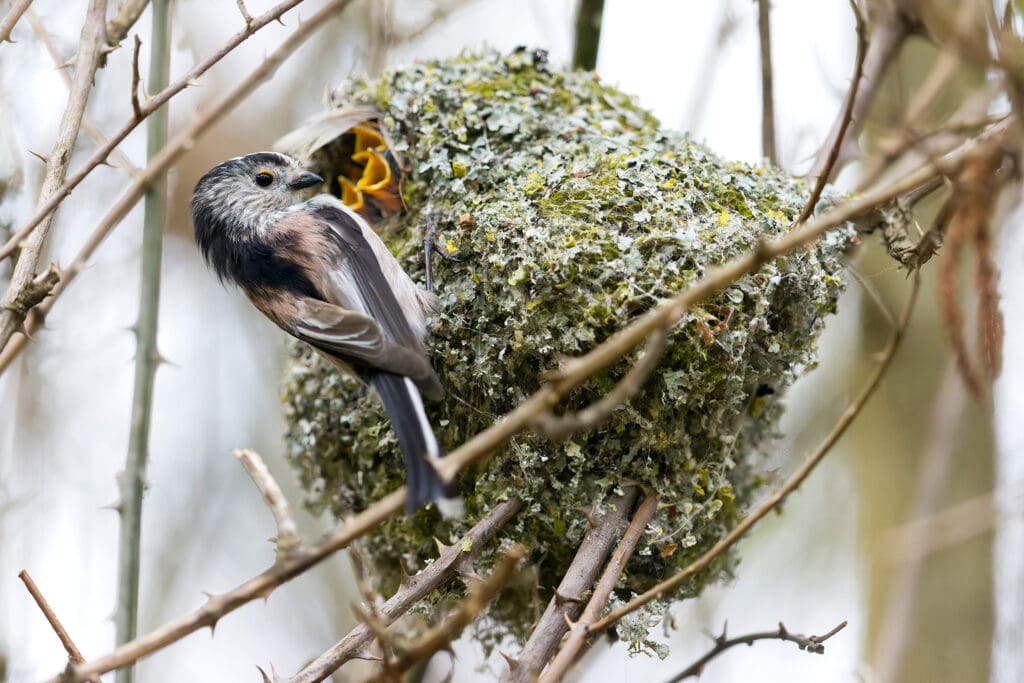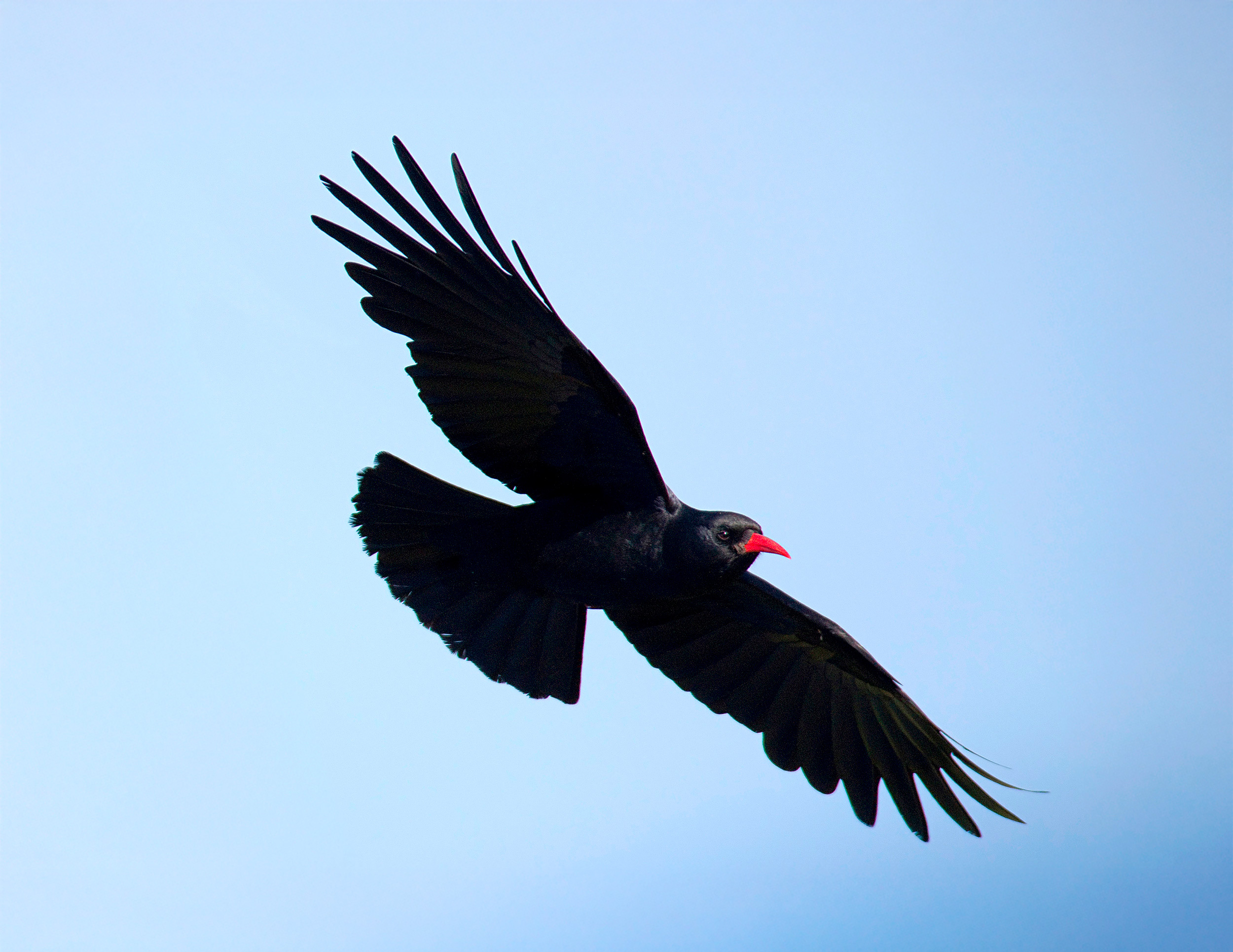Learn the difference between these tricky-to-identify corvids…
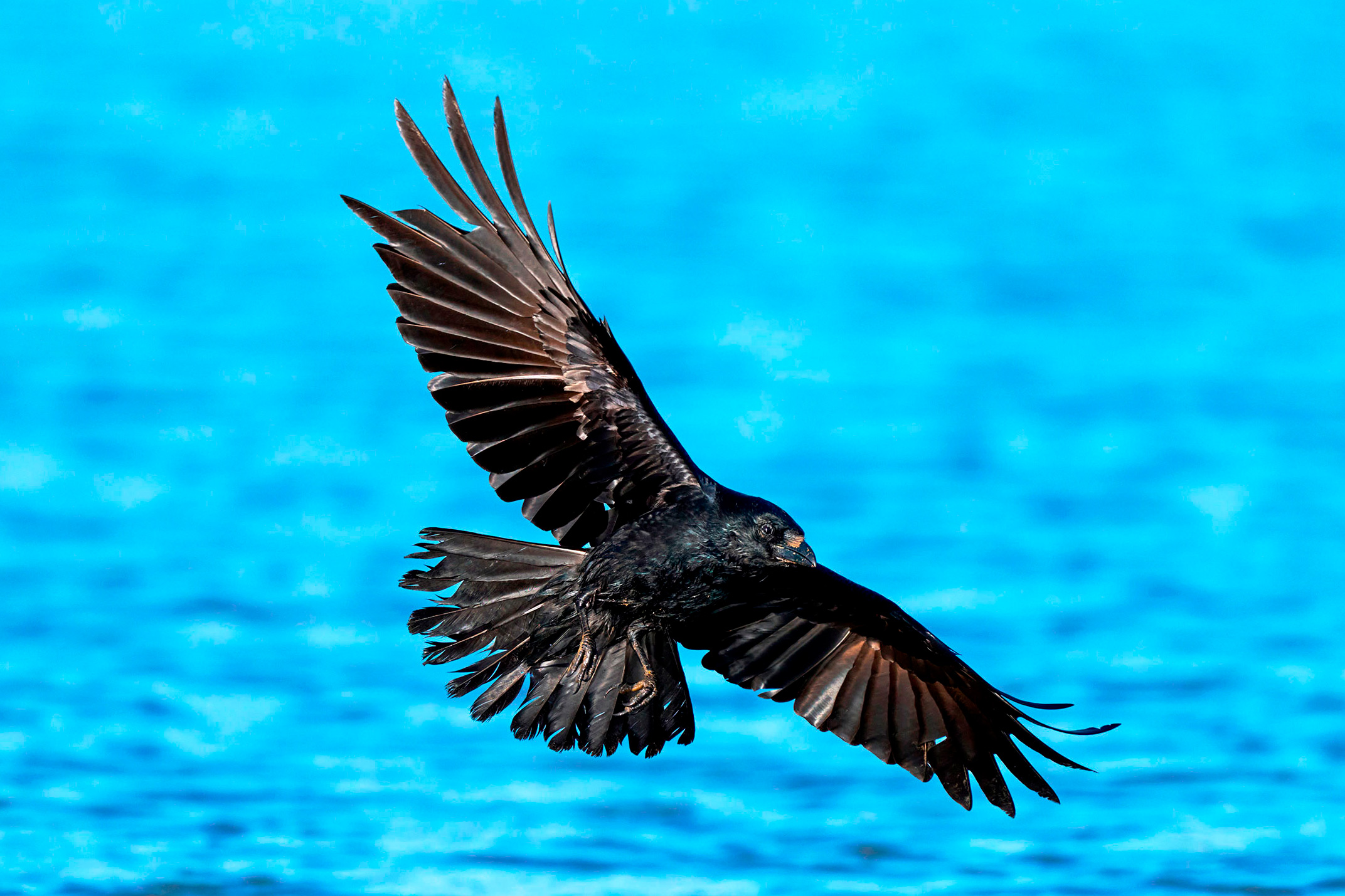
Carrion Crow. Photo: Richard Bedford (rspb-images.com)
Carrion Crow
A large black bird with evenly broad wings. In flight, wing beats are heavy and steady. The tail is fan shaped/rounded – not wedge shaped. They have a thicker, blunter beak than a Rook.
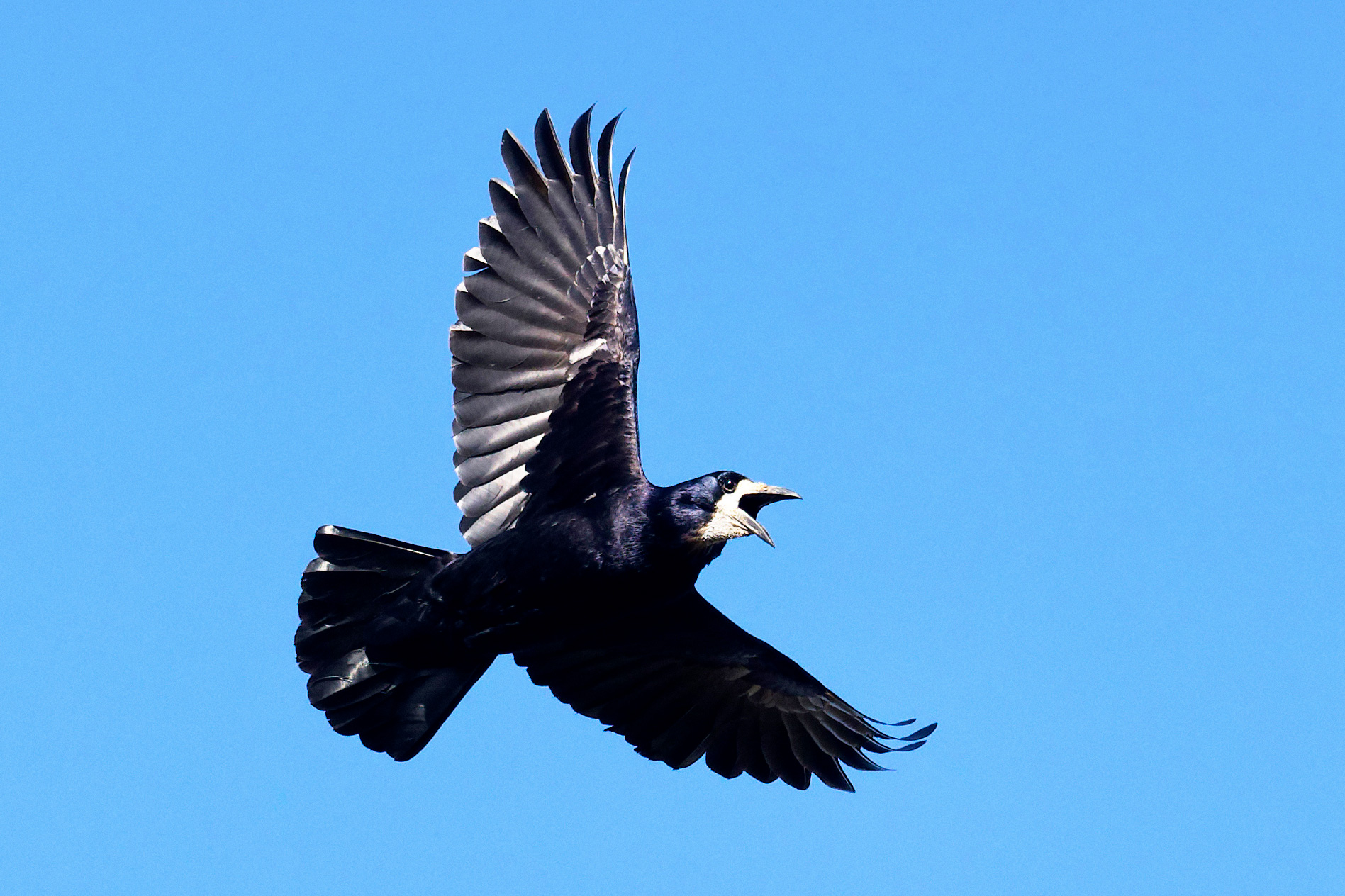
Rook. Photo: Paul Sawer (rspb-images.com)
Rook
Favour lowland open fields. Same size as a Carrion Crow, but in flight they have narrow wing bases, a more rounded/wedge-shaped tail and a long, pale, pointed beak. In juvenilles, the beak is all black.
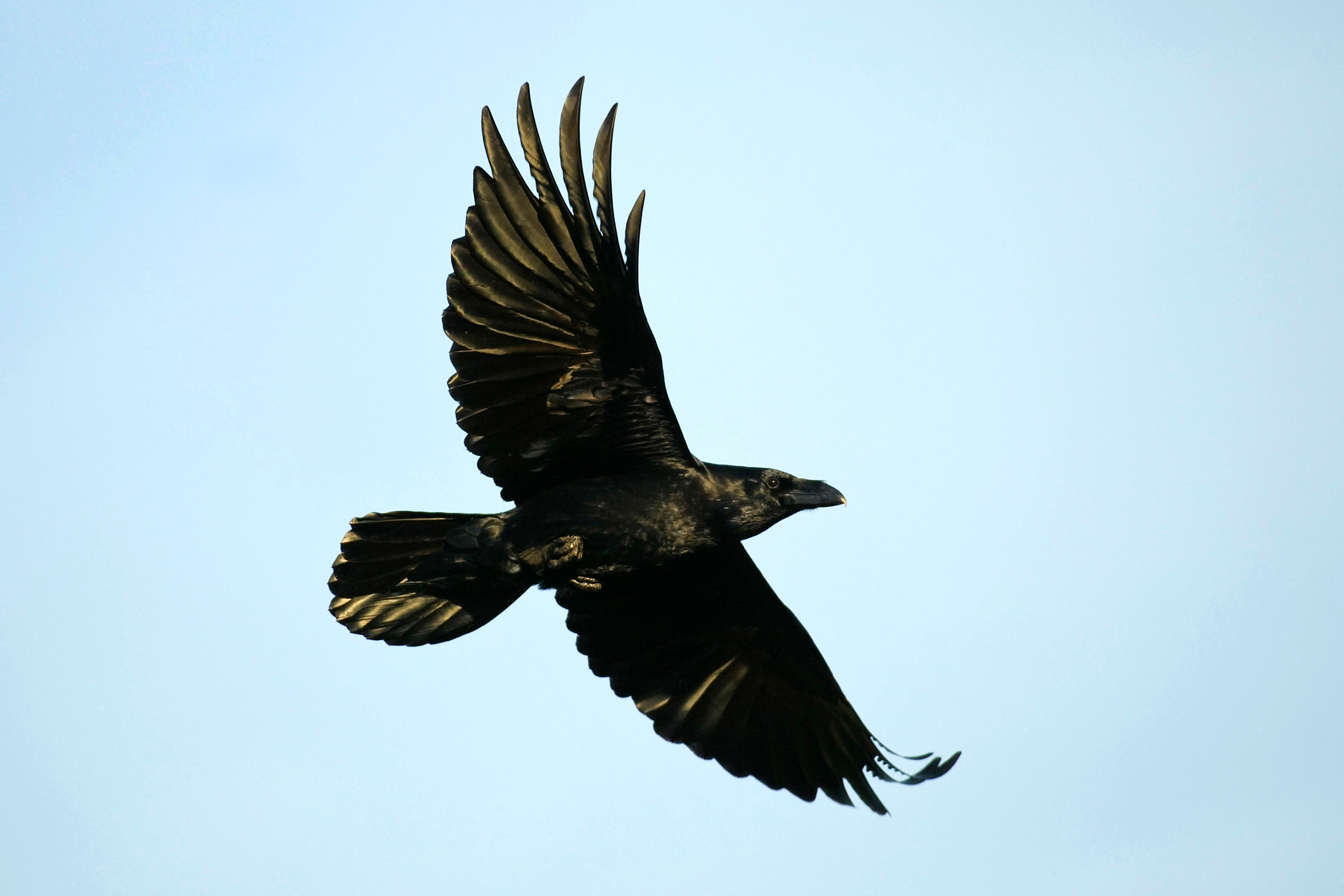
Raven. Photo: Chris Gomersall (rspb-images.com)
Raven
The beak is thick and heavy, with a projecting neck and a long, graduated, diamond-shaped tail. In flight, these huge birds have proportionately long, narrow wings with well-fingered wing tips.
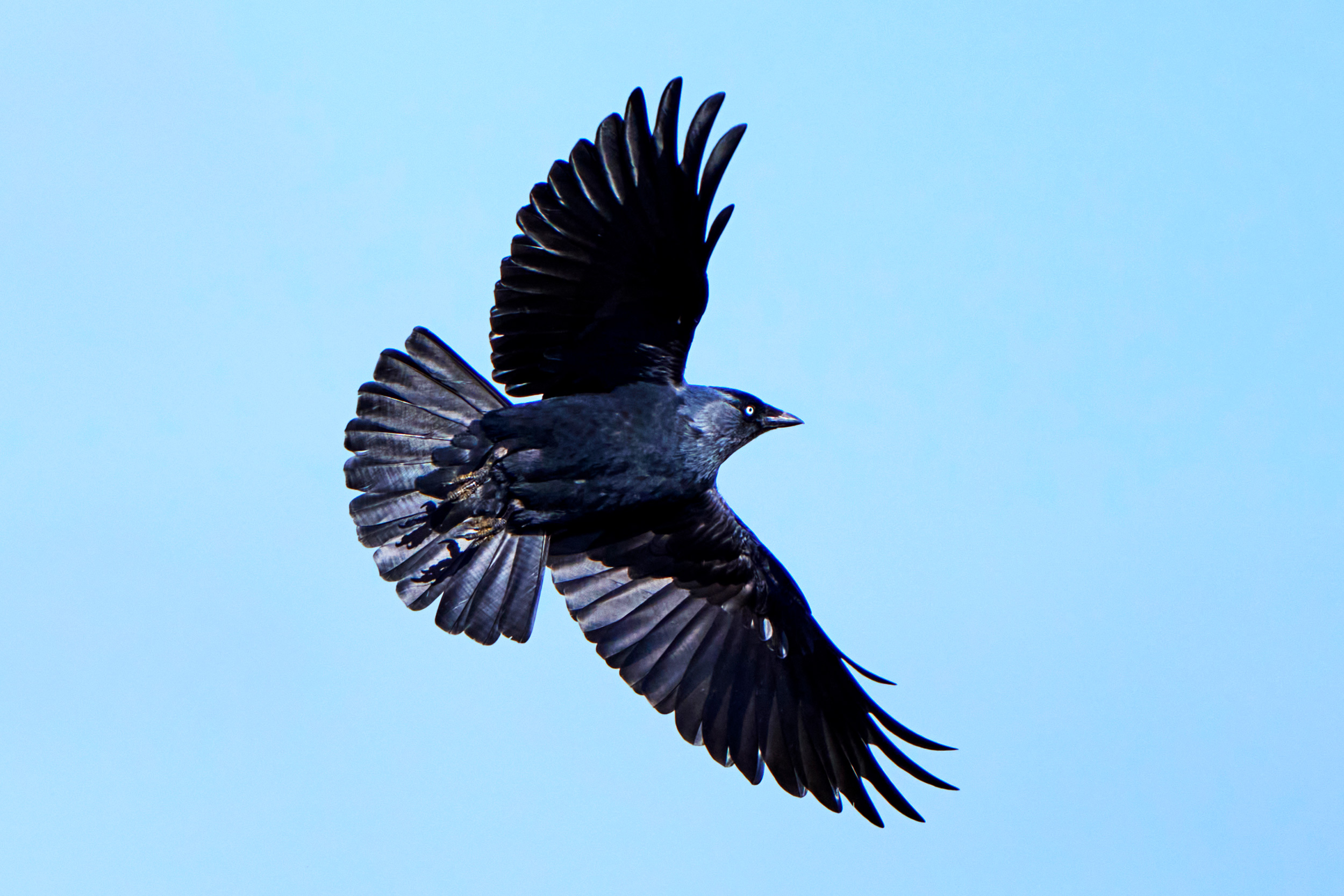
Jackdaw. Photo: Richard Bedford (rspb-images.com)
Jackdaw
The smallest of these four species. In flight, they’re neater and speedier. They have proportionately longer and narrower wings than a Carrion Crow. The bill is short, and the neck is broad.
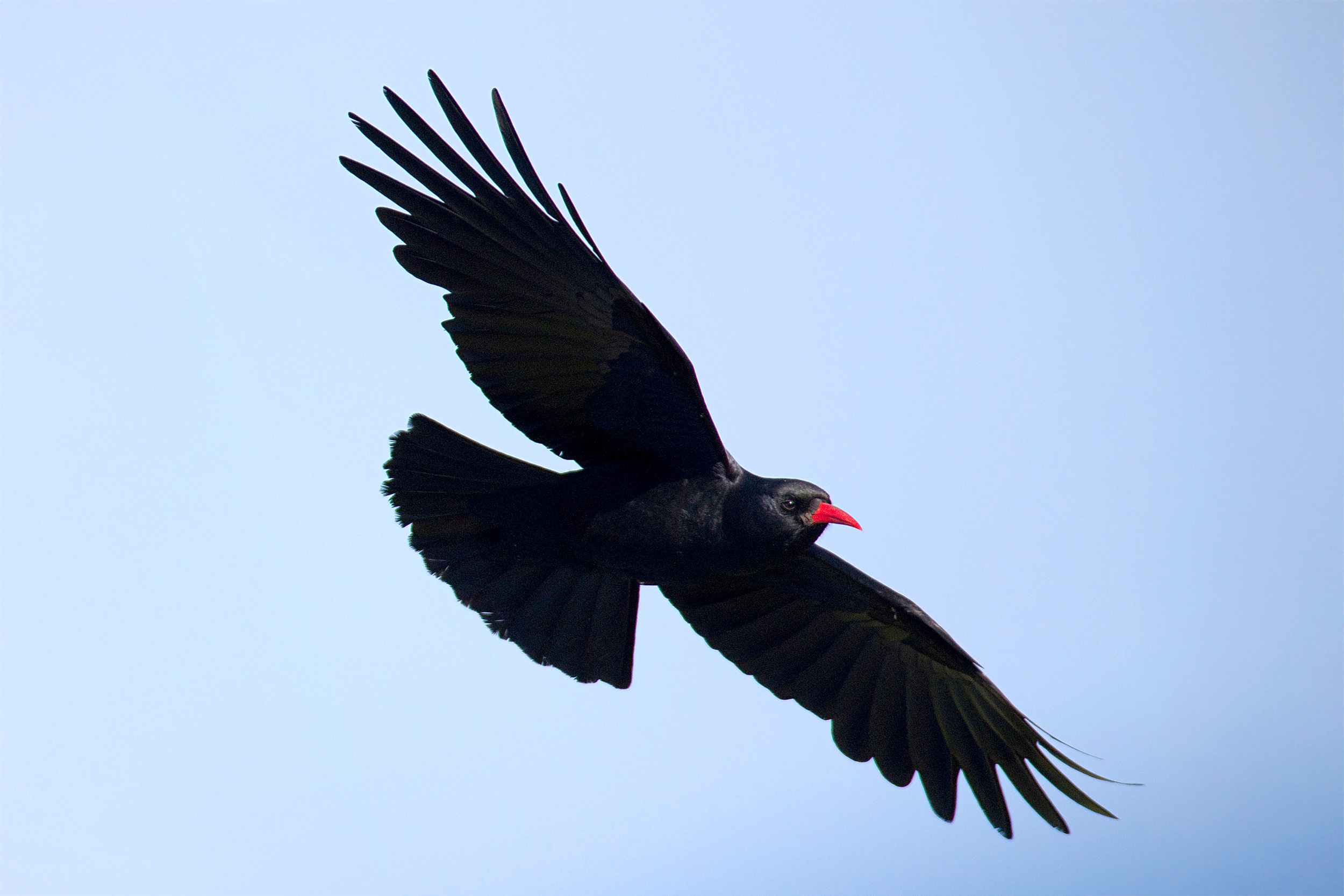
Chough. Photo: Bob Sharples (rspb-images.com)
Chough
Most likely be found around rocky landscapes in south-west Scotland, the Isle of Man, the west coasts of Wales and Ireland, and in parts of Cornwall. All black plumage and similar in size to a Jackdaw. They have long uniformly broad wings, with deeply fingered wingtips. The tail base is broad, and the tail is short and straight at the end. They have a red, downturned beak and pink legs. They’re acrobatic fliers, and may be seen tumbling through the air and diving with wings folded.
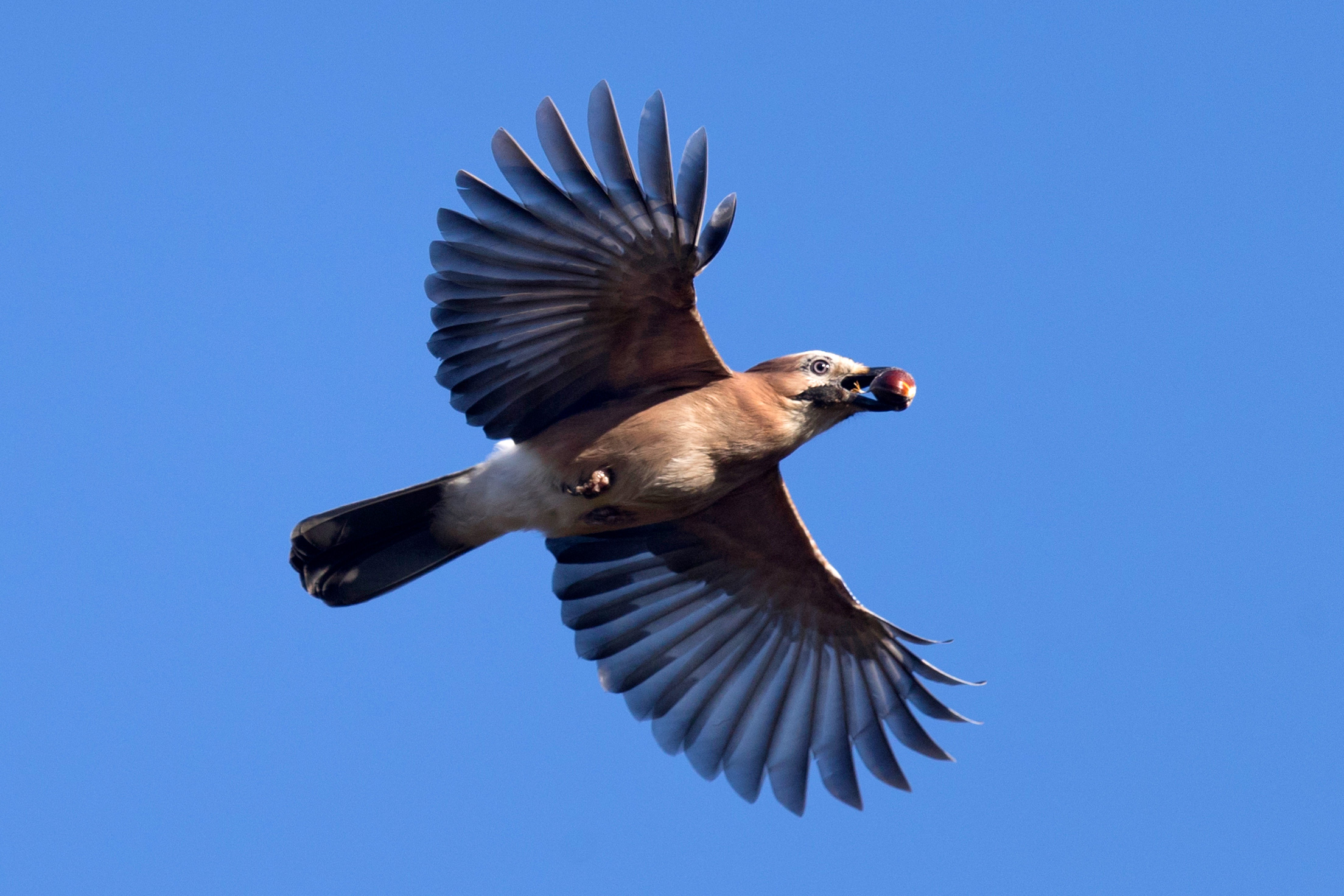
Jay. Photo: Paul Sawer (rspb-images.com)
These shy woodland birds are often heard before they’re glimpsed. They rarely move far from cover but may be seen flying between trees. They have pinkish brown plumage, a black ‘moustache’, white throat and distinctive white rump which can be seen in flight. On the upper wing they have a light blue panel and a white wing band. Tail is dark and relatively long. Their flight style is fluttering.
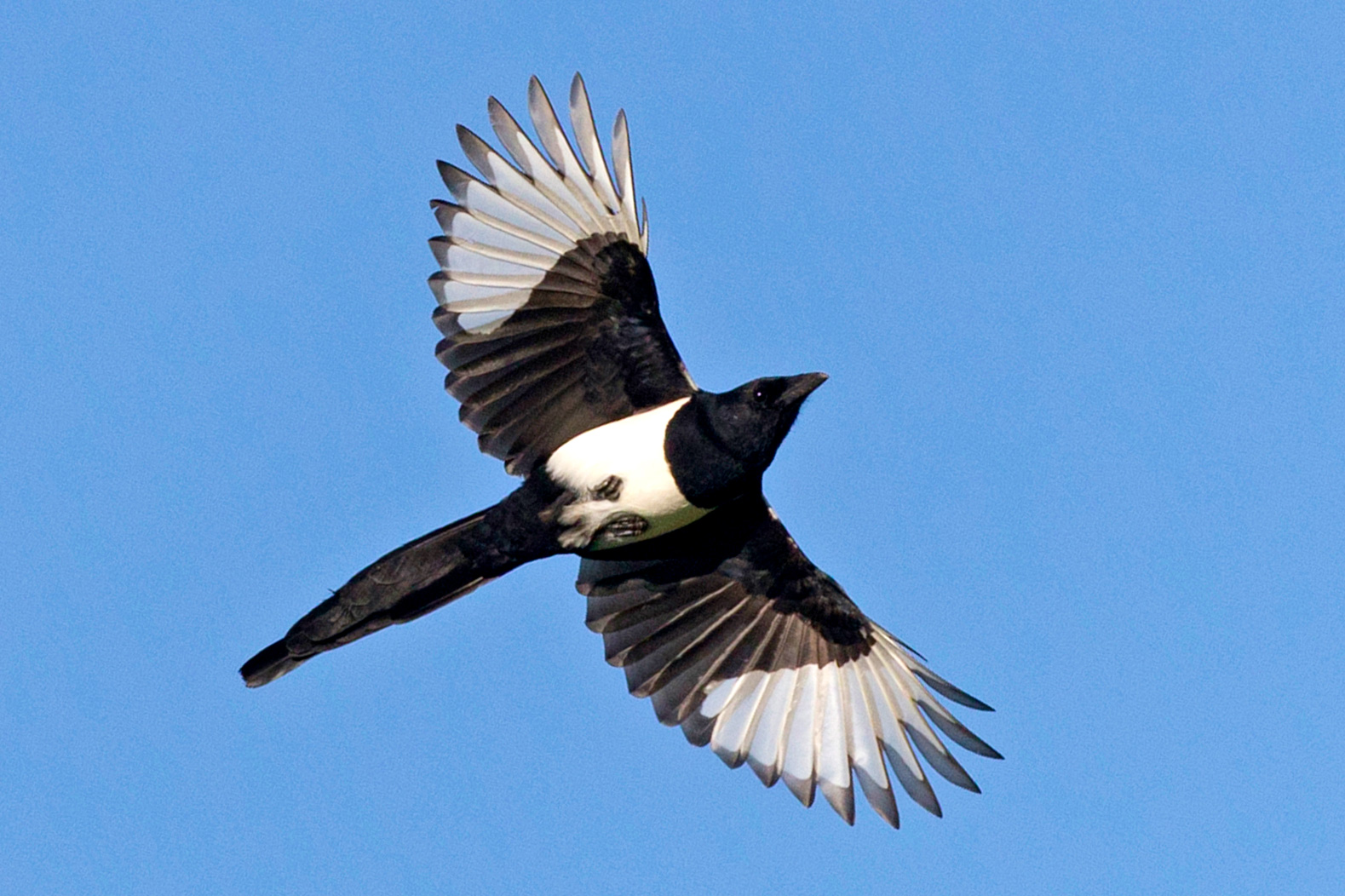
Magpie. Photo: Paul Sawer (rspb-images.com)
Magpie
Magpies are common and widespread through most of Britain and Ireland apart from north and north-west Scotland. In flight, their white bodies and white outer wings stand out against their otherwise dark plumage. They have short rounded wings and a very long tail which when spread out is shaped like a diamond. Flight is fluttering, with intermittent glides.
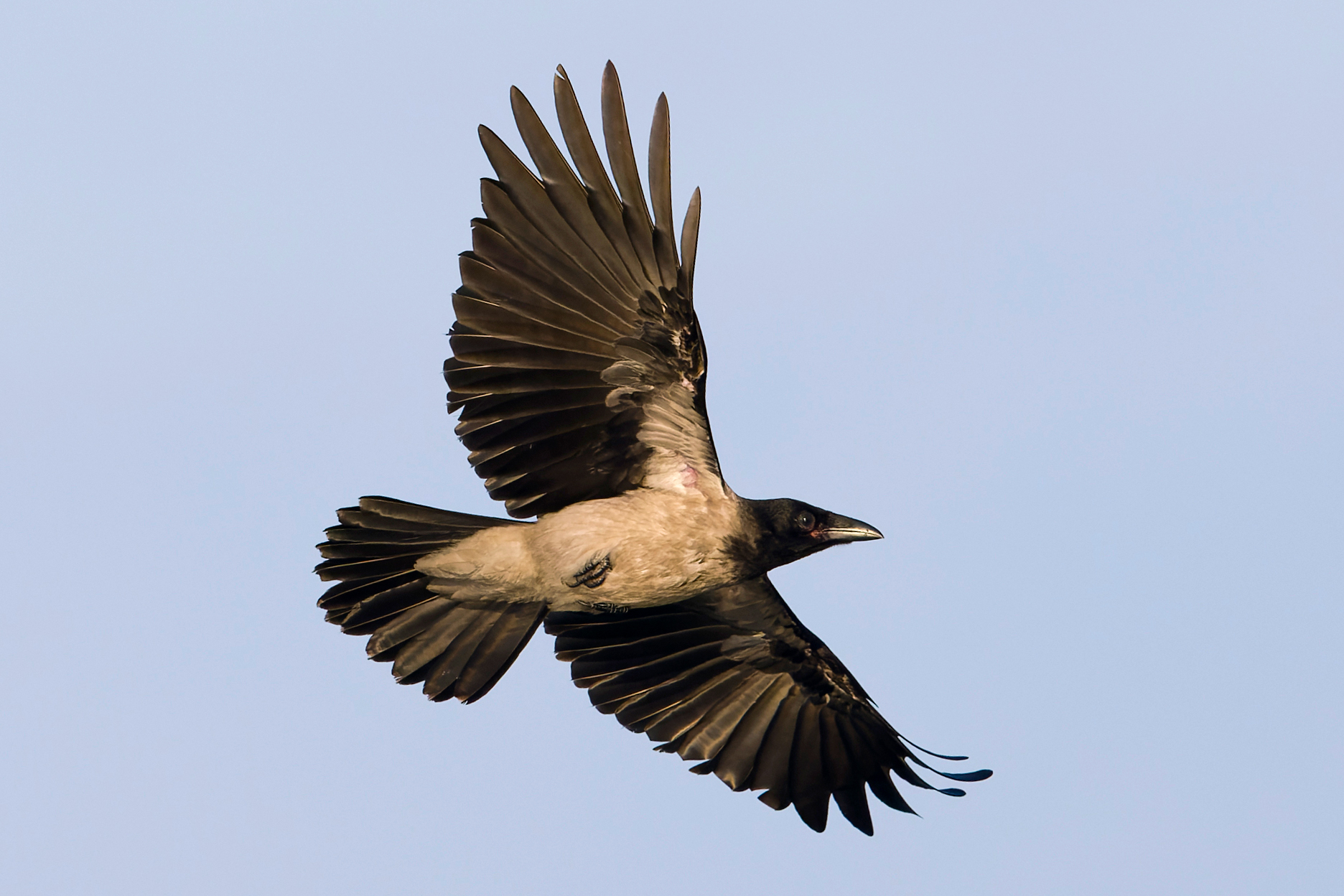
Hooded Crow. Photo: Paul Sawer (rspb-images.com)
Hooded Crow
The Hooded Crow has been considered a separate species to the Carrion Crow since 2002. They are very similar in appearance, but the Hooded Crow has a distinctive grey body. The two species do sometimes hybridise in areas where their range overlaps. Hybrid offspring typically resemble Hooded Crows, but the body is usually darker and less contrasting.
Now test your knowledge with this quiz!
You might also like
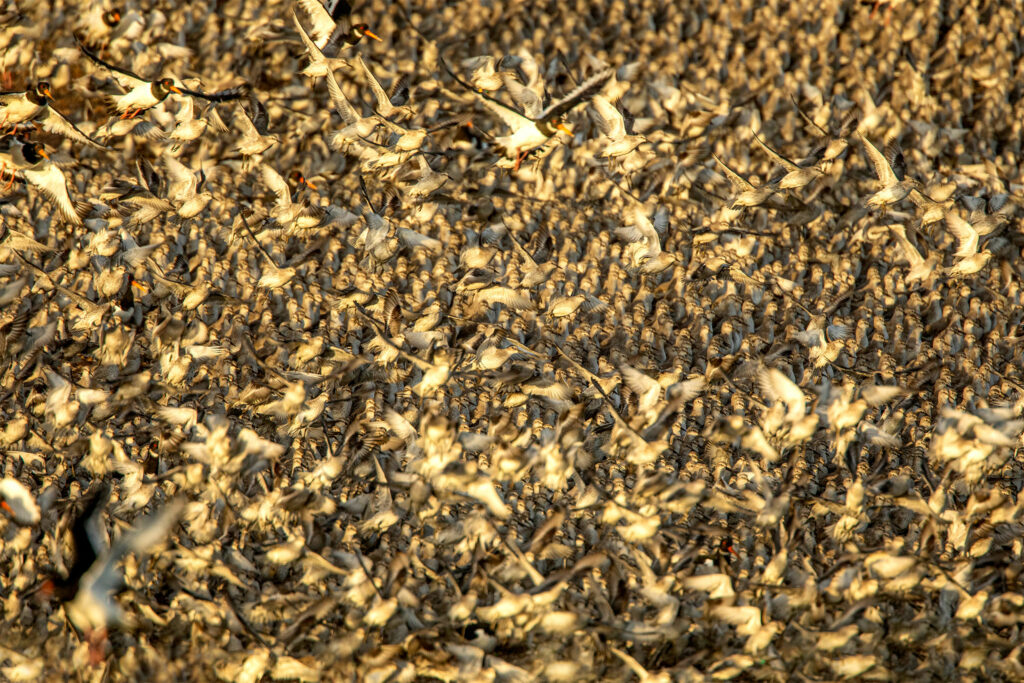
Wildlife in flight
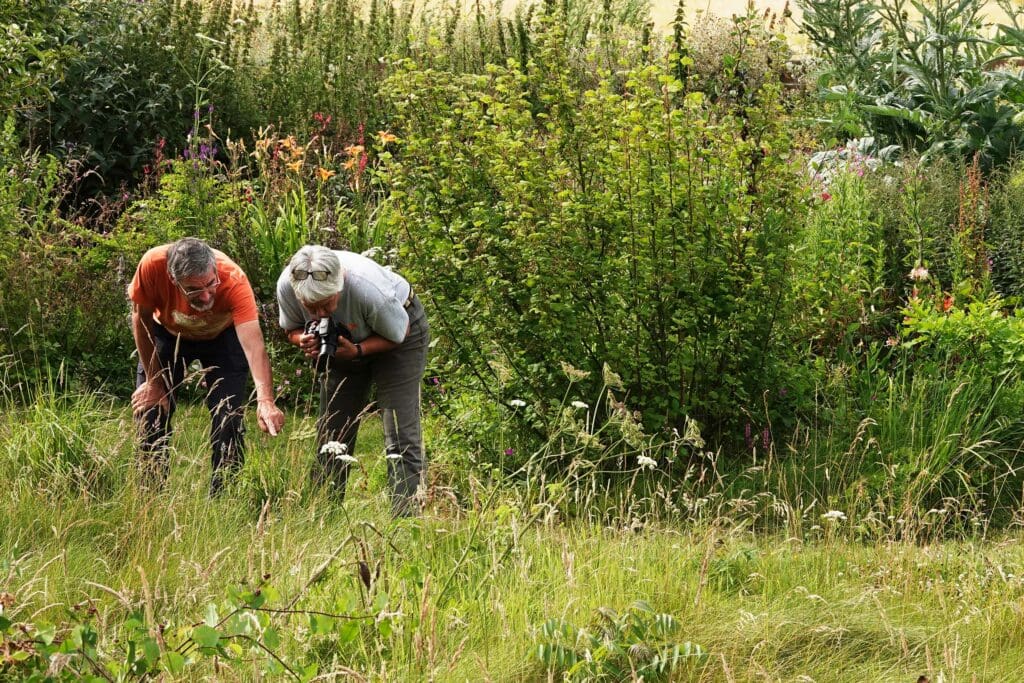
Observing and recording wildlife in a Norfolk garden
